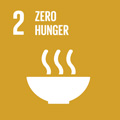- Docente: Gerardo Manfreda
- Credits: 6
- SSD: VET/04
- Language: Italian
- Moduli: Gerardo Manfreda (Modulo Mod 1) Frederique Pasquali (Modulo Mod 2)
- Teaching Mode: Traditional lectures (Modulo Mod 1) Traditional lectures (Modulo Mod 2)
- Campus: Cesena
- Corso: First cycle degree programme (L) in Sciences and Culture of Gastronomy (cod. 5808)
Learning outcomes
At the end of the course, the student will acquire the fundamental principles relating (i) to the zoonotic hazards associated to the gastronomy sector and is able to adopt risk analysis to prioritize these hazards; (ii) to develop of skills in the definition of a HACCP plan and in the identification of potential CCPs in the gastronomy sector; (iii) to know ISO sampling methods and procedures for the control of zoonotic hazards in the gastronomy sector; (iv) to apply traditional and molecular analytical methods for the detection and quantification of zoonotic hazards; (v) to verify the effectiveness of HACCP plans in the control of zoonotic hazards, through inspections and audits, in the gastronomy sector; (vi) to identify control measures in the gastronomy sector in order to prevent foodborne risks.
Course contents
Module 1
European legislation on food hygiene and safety: reg. 178, hygiene package and regulatrion 2073/2005.
Food analysis aimed at food safety: sampling methods and analytical methodologies
Foodborne illness in the gastronomy sector: the dimension of national and international problem.The chemical and biological foodborne risks in the gastromnomy sector.
The risk analysis and the risk priority in the gastronomy sector
HACCP plan and examples of application in the gastronomy
Module 2
EN / ISO standards for the detection and quantification of Salmonella, Listeria monocytogenes, Escherichia coli, Cronobacter, Staphylococcal Enterotoxins and Histamine
EN / ISO standards for the quantification of aerobic colonies, Enterobacteriaceae, Coagulase positive staphylococci, Campylobacter, Bacillus cereus
Rapid molecular methods for the determination of foodborne bacteria in food
DNA extraction from microorganisms and food matrices
Polymerase Chain Reaction and agarose gel electrophoresis
Principles and characteristics of the main sequencing methods
Readings/Bibliography
Notes of lectures; scientific pubblications
Teaching methods
Oral lectures, scientific seminaries, technical visit, laboratory activities.
In relation of the types of activities and teaching methods adopted, the attendance of this training activity requires for all students to carry out by e-learning the Modules 1 and 2 [https://www.unibo.it/it/servizi-e -opportunities / health-and-assistance / health-and-safety / safety-and-health-in-places-of-study-and-training] and the participation in Module 3 of specific training on safety and health in study places . Information on dates and methods of attendance of Module 3 can be consulted in the specific section of the degree program website.
Assessment methods
The oral examination will verify the theoretical and applicative knowledges of the student. Particularly positive will be evaluated the ability to move within the different topics and the achievement of an organic knowledge of the topics presented during the lessons.
The final grade is calculated as the weighted average of the two modules. The examination commission includes teachers from both modules.
Teaching tools
computer, over head display, instruments of microbiological laboratory
Office hours
See the website of Gerardo Manfreda
See the website of Frederique Pasquali
SDGs



This teaching activity contributes to the achievement of the Sustainable Development Goals of the UN 2030 Agenda.
